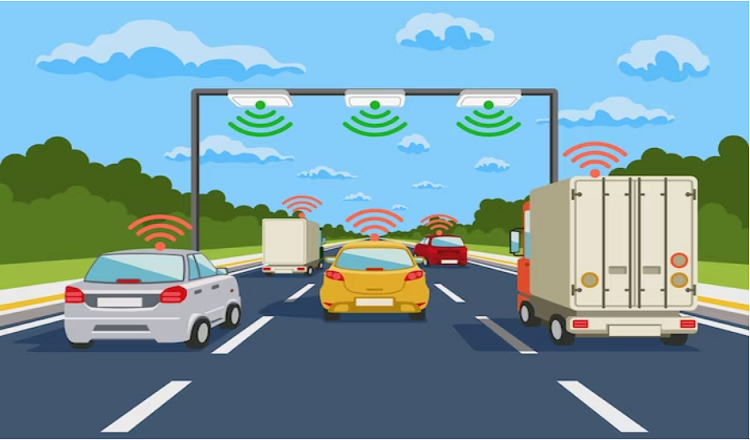Autonomous vehicles, also known as self-driving cars, are making headlines as the future of transportation. With the ability to operate without human intervention, these vehicles have the potential to revolutionize the way we travel, reduce traffic congestion, and improve air quality. In this blog, we will explore the fascinating world of autonomous vehicles and their potential to make a positive impact on our communities.
From reducing the number of cars on the road to reducing emissions, autonomous vehicles have the potential to solve some of our biggest transportation problems. But how exactly do they work and what are the benefits of using them? Let’s dive into the exciting world of autonomous vehicles and discover the potential they have to make our lives easier and our communities greener. With a mix of humor and informative writing, we will take a closer look at this cutting-edge technology and see why it’s more than just a science fiction dream. So buckle up, grab a coffee and get ready to explore the potential of autonomous vehicles.
The current state of traffic congestion and air quality
Traffic congestion and air pollution are two major issues that we face in our daily lives. In many cities, traffic is becoming more congested each year, leading to increased commute times and frustration on the roads. Meanwhile, air pollution is having a devastating impact on our health and the environment. According to data from the World Health Organization, 7 million deaths occur each year due to air pollution-related illnesses.
The root causes of traffic congestion and air pollution are complex and multifaceted, including factors such as population growth, urbanization, and a lack of public transportation options. The impacts of these issues are far-reaching and can have a significant impact on our physical and mental health, as well as the environment. From increased stress levels to respiratory problems, it’s time we take a closer look at the current state of traffic congestion and air quality and take steps to address these pressing issues
How autonomous vehicles can reduce congestion
Autonomous vehicles have the potential to revolutionize the way we travel and significantly reduce traffic congestion. By using advanced technology, such as sensors and communication systems, autonomous vehicles can drive more smoothly and efficiently, reducing road accidents and improving traffic flow. With the ability to communicate with each other and make real-time decisions based on traffic patterns, autonomous vehicles can help to reduce congestion and make our roads safer for everyone.
However, implementing autonomous vehicles is not without its challenges and limitations. Privacy and security concerns, as well as the need for infrastructure and regulation, must be addressed before widespread adoption can occur. Despite these challenges, the potential benefits of autonomous vehicles are too great to ignore, and it’s important that we continue to explore this technology and find ways to make it work for us. With a combination of innovative technology and smart planning, we can make our roads safer, reduce traffic congestion, and improve the overall quality of life for everyone.
How autonomous vehicles can improve air quality
Air quality is a pressing issue that affects us all, and traditional vehicles are a significant contributor to air pollution. With their emissions and fuel consumption, traditional vehicles are having a negative impact on the environment and our health. However, autonomous vehicles have the potential to greatly improve air quality through features such as electric powertrains, optimized driving patterns, and reduced idling.
Autonomous vehicles powered by electricity, for instance, emit significantly less pollution compared to traditional gasoline-powered vehicles. Additionally, optimized driving patterns can help reduce fuel consumption and emissions, while reduced idling can improve air quality in densely populated areas. However, there are challenges and limitations to implementing autonomous vehicles with a focus on air quality, such as the need for charging infrastructure and the availability of renewable energy sources. Nonetheless, the potential benefits of autonomous vehicles for air quality make it an exciting area of exploration and development
Case studies and real-world examples of autonomous vehicles
Autonomous vehicles are no longer just a futuristic concept, they’re already here and being put to use in real-world applications. From ride-sharing and delivery services to public transportation, autonomous vehicles are being integrated into our lives in new and innovative ways. These initiatives offer a glimpse into the potential of autonomous vehicles to reduce traffic congestion and improve air quality.
From the launch of Waymo’s autonomous ride-hailing service in Phoenix, to the deployment of autonomous delivery vehicles in cities around the world, there are numerous examples of autonomous vehicles making a positive impact. While these initiatives have shown the potential benefits of autonomous vehicles, they have also highlighted some of the challenges and limitations that need to be addressed. As we continue to explore the potential of autonomous vehicles, it’s important to take lessons learned from these real-world examples and use them to inform future deployments.
The future of autonomous vehicles and their impact on traffic congestion and air quality
The future of autonomous vehicles is exciting and full of potential. As technology continues to advance, we can expect to see even greater strides in reducing traffic congestion and improving air quality. From the development of even more sophisticated sensor and communication systems, to the integration of autonomous vehicles into smart cities, the possibilities are endless.
Trends and predictions indicate that the autonomous vehicle market will continue to grow, with governments and private companies playing a significant role in shaping its future. This growth will have a significant impact on employment and the economy, leading to both opportunities and challenges. It’s also important to consider the ethical, social, and environmental implications of the widespread deployment of autonomous vehicles, such as privacy concerns, the impact on employment, and the transition to sustainable energy sources. The future of autonomous vehicles is full of promise and potential, and it’s up to us to shape it in a way that benefits everyone.
Conclusion
In conclusion, the potential for autonomous vehicles to reduce traffic congestion and improve air quality is significant. Through the benefits of smoother and more efficient driving, reduced road accidents, and improved traffic flow, autonomous vehicles have the ability to make our roads safer and more efficient. Additionally, the use of electric powertrains, optimized driving patterns, and reduced idling can greatly reduce emissions and improve air quality.
Despite the challenges and limitations, such as privacy and security concerns, the need for infrastructure and regulation, and the availability of renewable energy sources, real-world case studies and initiatives demonstrate the potential for autonomous vehicles to make a positive impact. The future of autonomous vehicles is bright, but it’s important to carefully consider the ethical, social, and environmental implications as we move forward with their deployment.
In conclusion, the thesis statement that autonomous vehicles have the potential to reduce traffic congestion and improve air quality is supported by the evidence presented in this article. Further research and deployment of autonomous vehicles should continue with caution and consideration of the potential implications and benefits.




